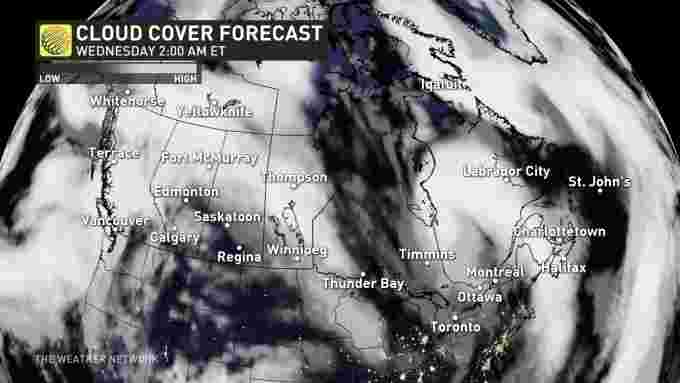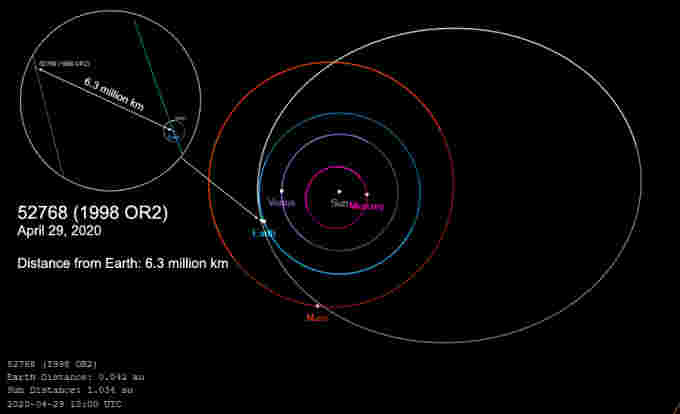The first meteor shower of Spring, the April Lyrids, are definitely a sight to see.
Timed perfectly on the night of April 21-22, so that the peak of the shower happens the night before the New Moon, there will be no competing sources of light in the sky.
 The radiant of the Lyrid meteor shower, at midnight on the night of April 21-22. Credit: Stellarium/Scott Sutherland
The radiant of the Lyrid meteor shower, at midnight on the night of April 21-22. Credit: Stellarium/Scott Sutherland
The 'radiant' of this meteor shower - the point in the sky where the meteors appear to originate - rises in the east as the Sun sets on April 21, and it tracks across the night sky towards dawn.
The absolute ideal time to watch is in the hours after midnight, when the sky is reaching its darkest, and the radiant is high up in the sky. If your sky is reasonably free of clouds, be sure to get away from city light pollution to get the best view!

If it is cloudy where you are, thus blocking your view of the meteor shower, there are other ways to check it out. You can see the signal meteoroids make when they plunge into the atmosphere via Meteor Radar or listen to them via the Meteor Echoes Livestream. Astronomy Live Stream also presents nightly views of the sky over Colorado.
Lyrid meteors originate from a stream of dusty, icy meteoroid debris left behind by Comet C/1861 G1 Thatcher. The comet itself is currently billions of kilometres away, out beyond the orbit of Pluto, and will not be seen again until the year 2276. Still, each year we receive a reminder of its existence, as Earth passes through the near constant stream of tiny meteoroids strung out along the comet's path. Each year in April, this shows up as streaks of light across the sky, peaking around April 22.
 This plot shows the path of Comet Thatcher through the solar system. Now, on April 21-22, Earth is intersecting with that path. As the inset shows, at this time, the comet itself is over 16 billion kilometres away, out beyond the orbit of Pluto. Credit: NASA CNEOS/Scott Sutherland
This plot shows the path of Comet Thatcher through the solar system. Now, on April 21-22, Earth is intersecting with that path. As the inset shows, at this time, the comet itself is over 16 billion kilometres away, out beyond the orbit of Pluto. Credit: NASA CNEOS/Scott Sutherland
Related: Want to find a meteorite? Expert Geoff Notkin tells us how!
METEOR? METEOROID? METEORITE?
These bright streaks are known as 'meteors', and they occur as the meteoroids are swept up and plunge through Earth's upper atmosphere. Travelling at around 100,000 km/h, a meteoroid compresses the air in its path until that air glows white-hot. A meteor flash typically lasts but a second (or less), but the larger a meteoroid is, the brighter and longer-lived its meteor will be. This is how we get fireballs, and even explosive 'bolides' for the largest meteoroids. The meteor winks out either when the meteorid is vapourized, or when the 'push-back' from the atmosphere slows the meteoroid down to the point where it can't compress the air any more.
The stream of meteoroids from Comet Thatcher tends to be relatively sparse. Thus, even at the meteor shower's peak, the Lyrids only deliver around 20 meteors per hour. Most viewers only see about half that number.
Embedded within the stream, however, are some larger meteoroids, and when those hit the atmosphere, bright fireballs add to the show!
Some fireballs and bolides can actually leave behind bits of the meteoroid that fall to Earth. When these are found on the ground, they are called meteorites.
Related: Got your hands on a space rock? Here's how to know for sure
COMET & ASTEROID SCARES
In recent weeks, there has been a lot of overblown doomsday hype about possible threats from asteroids and comets.
To state this clearly: There are no threats to Earth from asteroids or comets, and any stories saying differently are wrong, or are outright misinformation. Also, this meteor shower has nothing to do with any threat to Earth. There are multiple meteor showers each year, and they are events to be enjoyed, rather than omens to be feared.
One particular target for this doomsday nonsense is asteroid 52768 (1998 OR2), which is passing by Earth on April 29, 2020.
 The orbit of 52768 (1998 OR2), as of April 29, 2020. The inset view shows the asteroid safely positioned far beyond the orbit of the Moon during its closest pass. Credit: NASA CNEOS/Scott Sutherland
The orbit of 52768 (1998 OR2), as of April 29, 2020. The inset view shows the asteroid safely positioned far beyond the orbit of the Moon during its closest pass. Credit: NASA CNEOS/Scott Sutherland
These stories have originated from various 'tabloid' news sources around the world. With flashy headlines proclaiming "NASA Warns" and using phrases like "Approaching Earth", they heavily imply that the space agency is issuing alerts about impending impacts with Earth.
Nothing could be farther from the truth, however.
Asteroid 52768 (1998 OR2) was discovered in 1998, and astronomers have logged over 3,500 observations of it, some going back as far as 1987. With that much information at their fingertips, scientists have locked down the orbit of this object.
The main reason these stories seem to be hyping this fly, apparently, is due to the asteroid's size. 52768 (1998 OR2) is estimated at being around 2.5 kilometres wide. Admittedly, that is significant, and it would be very dangerous if anything like that struck the planet.
As it passes Earth on April 29, however, 52768 (1998 OR2) will be very far away - over 6.3 million kilometres at its closest distance. For reference, that is 16.4 times farther away than the Moon.
Watch below: NASA scientist Kelly Fast, with the Planetary Defense Coordination Office, shows us exactly why there's no worry about this asteroid!
We now know, with 100 per cent certainty, that 52768 (1998 OR2) is no threat to Earth, either now or at any time in the future.
In fact, the asteroid does not even appear on NASA's list of 'potentially hazardous asteroids' that have any chance of striking us. Some asteroids have earned a place on that list even for having an impact chance that ranks as one chance in ten billion, for a date over 100 years from now. 52768 (1998 OR2) is not on that list now, nor has it ever been (some asteroids live on the list for awhile, and then are removed when further observations demonstrate it is no threat).
Remarkably, the Arecibo Radio Observatory team, operating out of Puerto Rico, captured radar images of 52768 (1998 OR2) over the weekend, by bouncing radio waves off the asteroid's surface.
TeamRadar and the @NAICobservatory staff are taking the proper safety measures as we continue observations. This week we have been observing near-Earth asteroid 1998 OR2, which looks like it's wearing a mask! It's at least 1.5 km across and is passing 16 lunar distances away!
Arecibo Radar on Twitter
Now, as always, NASA states that there are no known asteroid threats for the next 100 years (or more).
Sources: NASA CNEOS | Space Weather | NASA CNEOS | With files from The Weather Network
RELATED: WHAT'S ON DECK FOR STARGAZERS AND SKYWATCHERS THIS SPRING?
https://news.google.com/__i/rss/rd/articles/CBMicWh0dHBzOi8vd3d3LnRoZXdlYXRoZXJuZXR3b3JrLmNvbS9jYS9uZXdzL2FydGljbGUvbHlyaWRzLTIwMjAtc3ByaW5ncy1maXJzdC1tZXRlb3Itc2hvd2VyLXBlYWtzLXdlZG5lc2RheS1tb3JuaW5n0gEA?oc=5
2020-04-21 19:35:00Z
52780726926053
Tidak ada komentar:
Posting Komentar